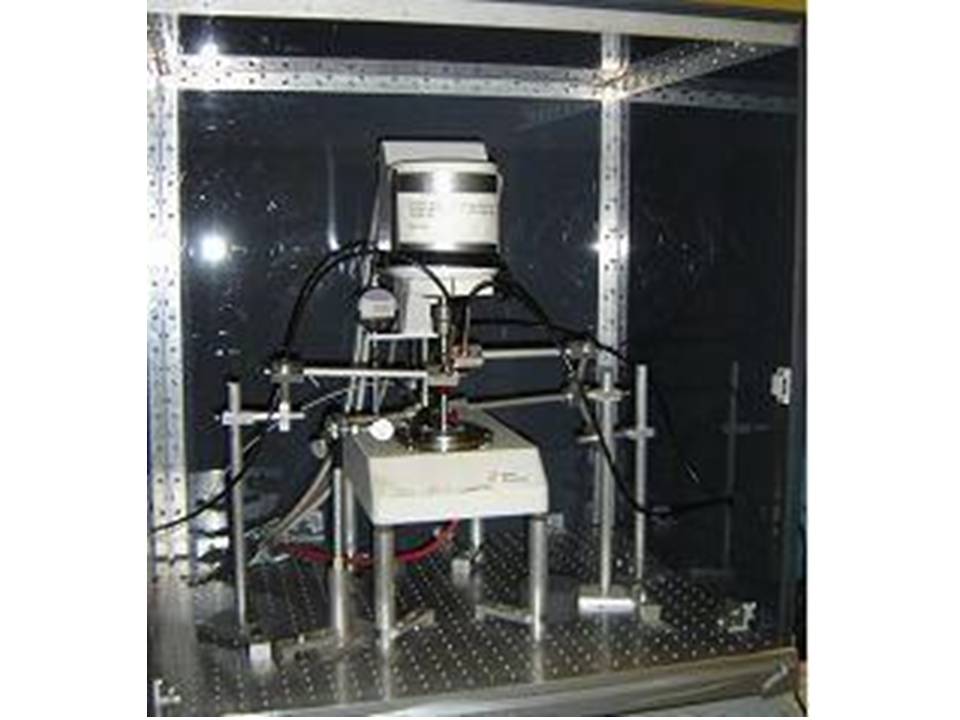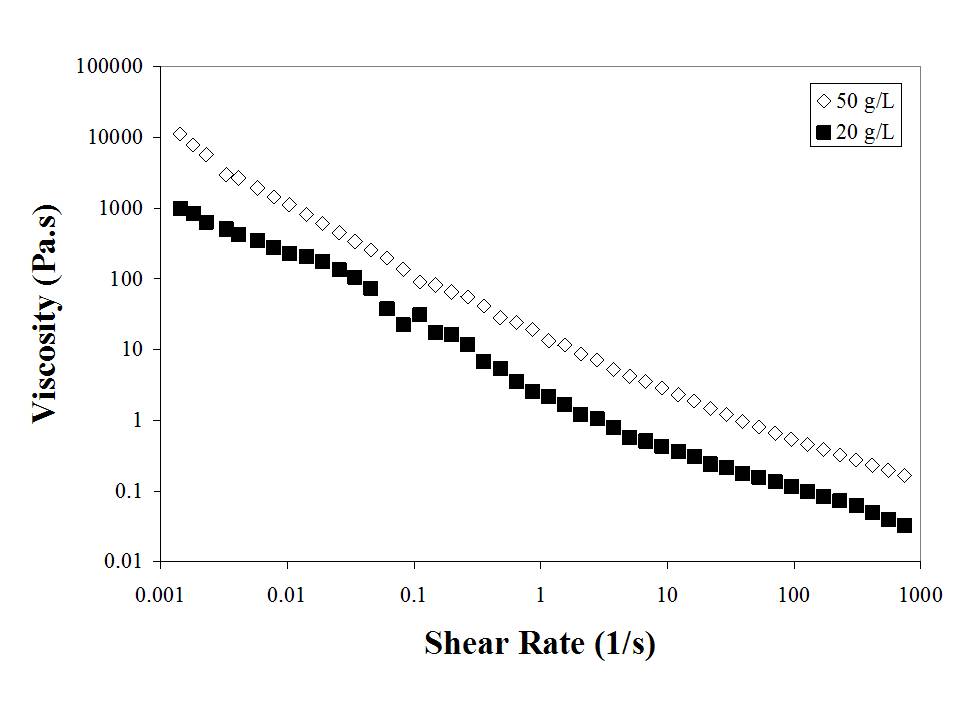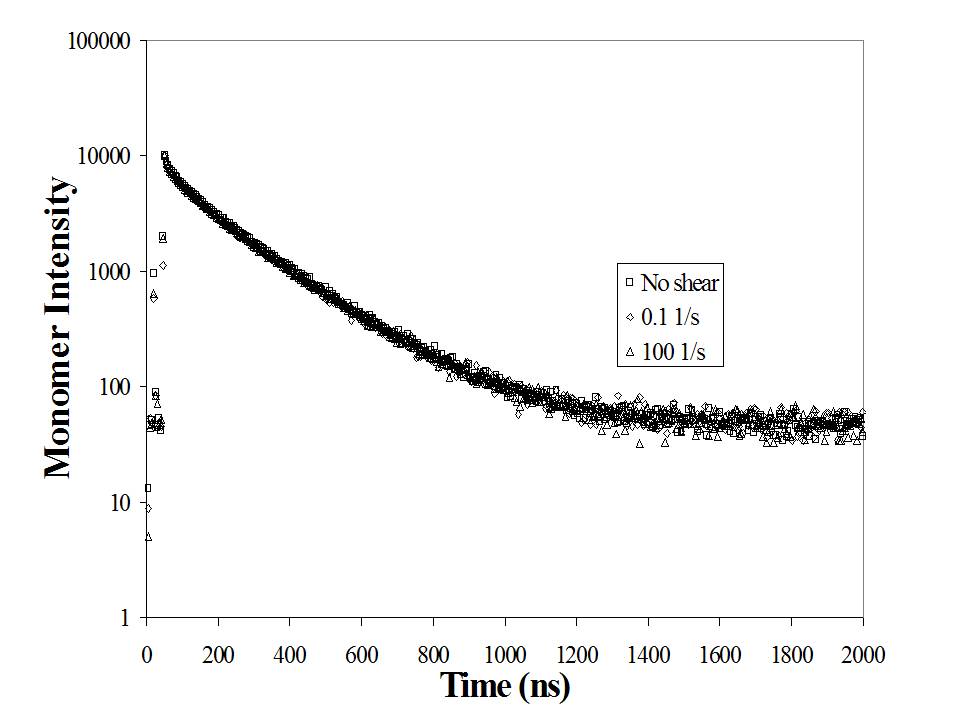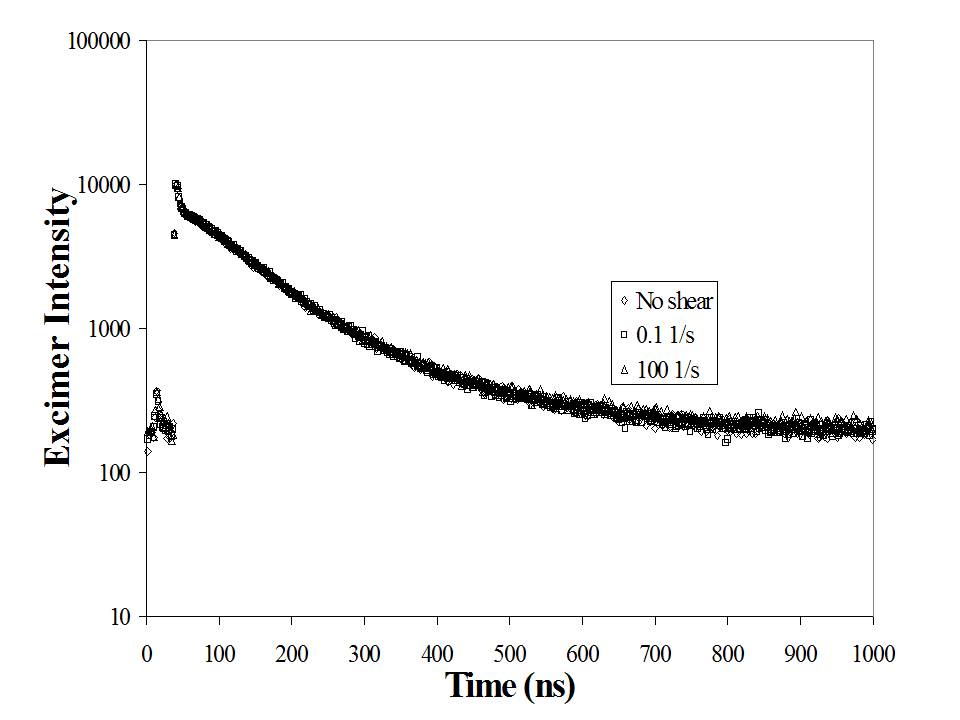Reports: AC7
46292-AC7 Complete Characterization of Solutions of Associative Thickeners by Using a Combination of Fluorescence and Rheology Experiments
Final report
Associative polymers (AP) are water-soluble polymers onto which apolar pendants have been covalently attached. In aqueous solution, the apolar pendants associate in solution inducing the formation of an intermolecular polymeric network that hinders the flow of the solution, and thus, dramatically enhances the solution viscosity. However, the hydrophobic aggregates are transient in nature and can be disturbed by the application of an external stress, such as shear. Upon shear, AP solutions undergo a rearrangement of the hydrophobic aggregates at the molecular level that favors intramolecular associations, resulting in a loss of the network followed by a drop in viscosity. This effect has been referred to as shear-thinning.
The correlation that exists in AP solutions between the rheological properties probed at the macroscopic level and the hydrophobic associations probed at the molecular level led us to use a combination of fluorescence and rheology to investigate the effect that shearing an AP solution would have on the hydrophobic associations. To this end, an experimental set-up was built that enabled to shear an AP solution at a fixed shear rate and acquire simultaneously the fluorescence emission spectra and decays of the fluorescently modified AP. The fluorophore used to modify the APs was pyrene since it is hydrophobic and its fluorescence depends on its level of self-association. An unassociated pyrene emits sharp fluorescence peaks at 375 430 nm whereas pyrene aggregates exhibit a broad structureless emission at 430 550 nm (see Figure 1). Excitation of a pyrene aggregate emits via the formation of an excimer.
Figure 1: Fluorescence spectra of Py2-PEO samples in water. From top to bottom: Mn = 2 K, 5 K, 10 K, 16.5 K. lex = 344 nm.
Optical fibers were used to convey the excitation light from the steady-state and time-resolved fluorometers to the rheometer and back to analyze the emission of the pyrene-labeled AP (Py-AP) solution. The use of flexible optical fibers allowed the use of different rheometer geometries, either the parallel plate geometry where the upper plate was made of transparent quartz or a bob and cup geometry where the bob was also made of quartz. A solid box was built to shield the rheometer from interfering room light. Mounts were designed and constructed to hold the optical fibers. A view of the experimental set up can be seen in Figure 2.
Figure 2: Left panel: Black box holding the rheometer with optical fibers connected to the steady-state fluorometer (right) and time-resolved fluorometer (left). Right panel: the rheometer inside the black box with optical fiber holders.
Several water-soluble polymers were labeled with pyrene. Copolymerization of N,N-dimethylacrylamide with 1-pyrenemethylacrylamide yielded a pyrene-labeled poly(N,N-dimethylacrylamide) (Py-PDMA). Py-PDMA samples were prepared with 1 -7 mol% pyrene-labeled monomer. Reaction of tosylated poly(ethylene oxide) with 1-pyrenemethoxide yielded a pyrene end-labeled poly(ethylene oxide) (Py2-PEO). Five Py2-PEO samples were synthesized with Mn = 2, 5, 10, 16.5, and 32 K. Emulsion polymerization of ethyl acrylate (~50 mol%), methacrylic acid (~50 mol%), and a pyrene-labeled macromonomer (~ 0.1 1 mol%) resulted in a pyrene-labeled Hydrophobically modified Alkaline Swellable Emulsion copolymer (Py-HASE).
The Py-PDMA and Py2-PEO samples were used to characterize the fluorescence response of the pyrene aggregates. A robust experimental protocol was established to use the information contained in the fluorescence experiments to determine quantitatively the fraction of pyrene pendants that are associated in solution. In particular, the molar absorption coefficient of a pyrene aggregate was determined for the first time with Py-PDMA in water. Similar values have been obtained for the molar absorption coefficients pyrene aggregates generated by Py2-PEO in water. Unfortunately, all Py-PDMA and Py2-PEO samples were unable to thicken the solution sufficiently in order to conduct viscoelastic experiments with the rheometer.
On the other hand, the Py-HASE samples were found to thicken the solution dramatically and their solutions underwent shear-thinning (Figure 3). Furthermore, earlier studies had shown that the hydrophobic pyrene pendants of Py-HASE were critical to induce their interesting viscoelastic properties. Py-HASE turned out to be an excellent candidate to carry out the combined rheology and fluorescence experiments with the experimental set-up described in Figure 2. Solutions containing 0.5, 1, 2, 3, 4, and 5 wt% of Py-HASE samples were prepared in 0.1 M Na2CO3 solution at pH 9. The two lower concentrations were studied with with the bob and cup geometry whereas the four higher concentrations were studied with the parallel plate geometry.
Figure 3: Plot of viscosity versus shear rate for Py-HASE in 0.1 M Na2CO3 solutions at pH 9. [Py-HASE] = 20 g/L (bottom) and 50 g/L (top).
Steady-state fluorescence spectra and time-resolved fluorescence decays of the pyrene monomer and excimer were acquired for all solutions without shear and while the solutions were sheared at 0.1 and 100 s-1 (Figure 4). The spectra and decays shown in Figure 4 all overlap regardless of shear rate. Since the fluorescence spectra and decays report on the level of pyrene aggregation, the overlap observed in Figure 4 for all the measurements demonstrate that rearrangement of the polymeric network which must occur when the shear rate is increased from 0 to 0.1 to 100 s-1 according to the shear-thinning effect observed in Figure 3 does not generate dangling ends, i.e. unassociated hydrophobes. These results imply that rearrangement of the hydrophobes upon application of shear involves a switch from inter- to intramolecular association of the hydrophobes without affecting the fraction of unassociated hydrophobe.
Figure 4: Fluorescence spectra (left; lex = 344 nm), monomer fluorescence decays (center; lex = 344 nm, lem = 375 nm), excimer fluorescence decays (right; lex = 344 nm, lem = 510 nm) of [Py-HASE]=50 g/L in 0.1 M Na2CO3 at pH 9 without shear and with shear rate of 0.1 and 100 s-1.
This research was conducted by a number of graduate students whose salary was supported by the Petroleum Research Fund. Of those, Howard Siu and Steve (Shaohua) Chen were the most involved in the project.











